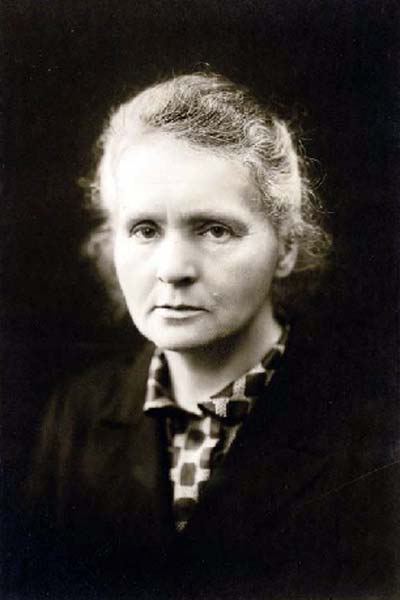Born on November 7, 1867, in Warsaw, Kingdom of Poland (which was officially made part of the Russian Empire in the year of her birth), Marie Curie was one of the most prominent figures in the field of science and the first woman ever to receive the prestigious Nobel Prize in Chemistry (1911) for her groundbreaking research on radioactivity.
Curie’s Early Years
Born Maria Salomea Sklodowska, the youngest child of Wladyslaw and Bronislawa Sklodowski, two well-respected teachers in Warsaw, Curie grew up together with her four siblings (three sisters – Zofia, Bronislawa, and Helena, and one brother, Josef) in poverty. Marie Sklodowska-Curie lost her sister Zofia to typhus when she was ten years old and then her mother to tuberculosis when she was only twelve.
These tragedies had a great impact on her spiritual life, making her turn away from Catholicism and become agnostic. After graduating from a gymnasium for girls in 1883, she enrolled in the pro-Polish underground educational institution called Flying University (open for both sexes, unlike legal universities in which girls were not accepted) and she attended courses held in various private houses in Warsaw.
When she was 18, while working as a governess for the Zorawskis, her father’s relatives, she fell in love with their son, Kazimierz Zorawski, who would become a famous mathematician and the rector of Krakow University. However, his parents refused to give the couple their blessing because Marie was poor. From 1890 to 1891, Curie began working in a chemical lab run by Josef Boguski, her cousin and the former assistant of famous chemist Dmitri Mendeleev.
Life in France
In 1891, Curie began a new life in France where she enrolled at the University of Paris (the Sorbonne) to continue studying physics, mathematics, and chemistry. She worked as a tutor in the evening and she used the money to pay the rent for the garret located near the Sorbonne and where she spent her nights working intensely on her scientific projects and literally living on bread, butter, and tea.
In 1893, she earned her degree in physics and began working in Professor Gabriel Lippmann’s research laboratory. In 1894, when she also earned her second degree in mathematics, she met Pierre Curie, who was then an instructor at the School of Physics and Chemistry in Paris. The couple married in a civil union on July 26, 1895. She wore a simple navy dress, which would then become her lab outfit. In addition to their passion for science, the couple also enjoyed trips aboard and long bike rides.
Achievements and Accolades
The significance of Curie’s scientific work is mirrored in the multiple and prestigious awards received throughout her career. She is the first female Nobel Prize winner and the only scientist ever to receive a Nobel Prize in two fields of science, both in chemistry (1911) and physics (1903) without sharing them with co-recipients.
In July of 1898, the couple of scientists announced the discovery of polonium (which they named after her native country) and in December, they announced their discovery of radium. Curie pioneered valuable techniques for the isolation of radioactive isotopes, which were then used in the first medical studies conducted (under Curie’s direction) into the treatment of malignancies.
During World War I, she advocated the use of radium for alleviating suffering in cancer patients. She published, along with her husband, 32 scientific papers among which one showing radium s effectiveness against tumor-forming cells. Marie Curie managed to isolate pure radium metal in 1910. She also advocated the need to gather radioactive sources not only for medical purposes but for future research in nuclear physics. However, the Curies discovery of radium was not patented and they did not benefit from this growing medical industry. In 1900, Marie Curie became the first woman faculty member at the University of Paris.
Death and Legacy
Marie Curie passed away at the age of 66 on July 4t 1934, in the Sancellemoz sanatorium located in the small commune of Passy, Haute-Savoie in southeastern France. The cause of her death was aplastic anemia, a fatal disease that she had acquired following the prolonged exposure to X-rays, especially during World War I when she established the first military X-ray units.
She was survived by her two daughters, Irene Joliot-Curie (who was born in 1897 and died in 1956) and Eve Curie (born in 1904 and died in 2007). In 1995, Marie Curie became the first woman to have her ashes enshrined on her own merits in the Pantheon in Paris, France. She founded two important centers of medical research, the Curie Institute in Paris and the Curie Institute in Warsaw.
